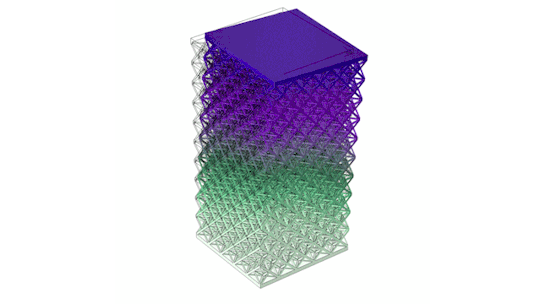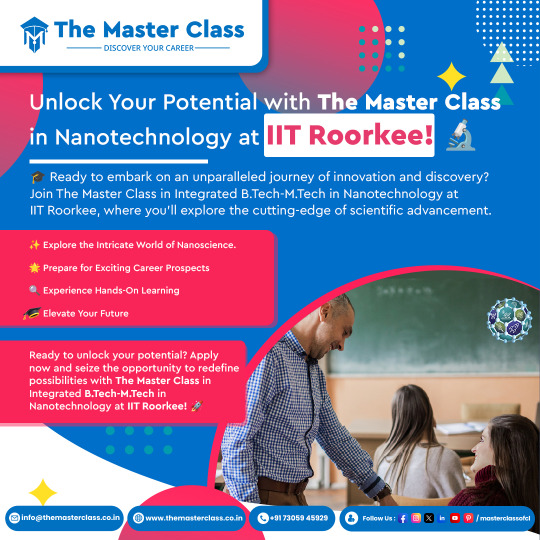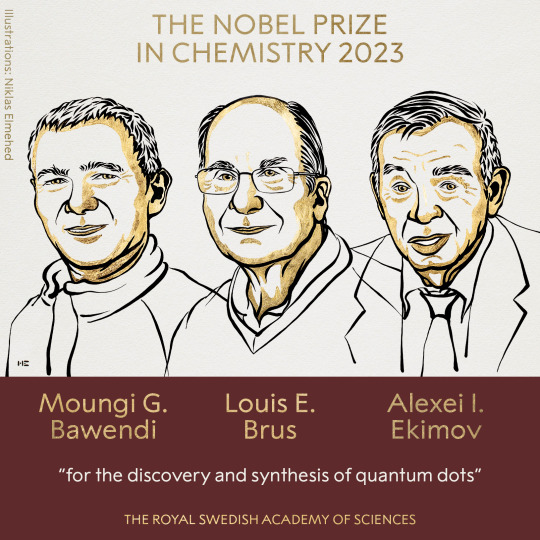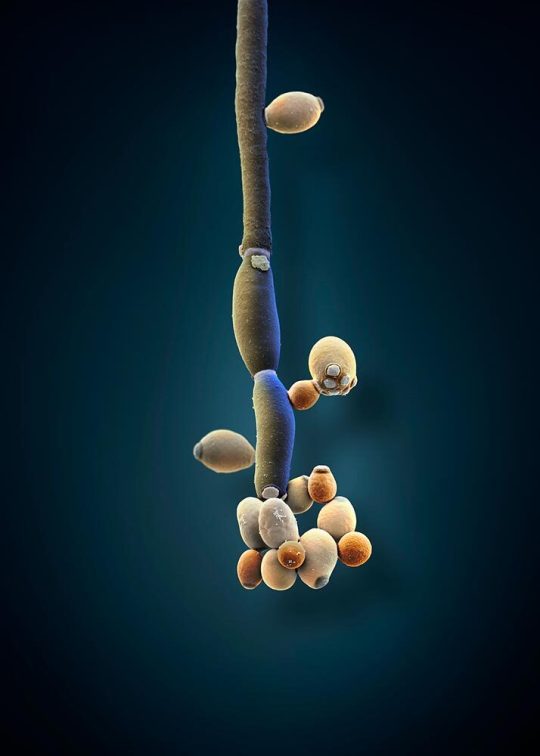#NanoScience
Explore tagged Tumblr posts
Text
just thought about how absolutely wild it is that I'm actually studying quantum mechanics right now. it sounds so surreal and tbh I didn't think I'd actually manage to do it
#quantum mechanics#quantum physics#quantum chemistry#nanoscientist#nanoscience#I'm so happy i get to do my nerd shit with people i love
6 notes
·
View notes
Text

Nanochemistry
Nanochemistry is an interdisciplinary field at the frontier of chemistry and nanoscience, focusing on the synthesis, characterization, and manipulation of materials at the nanoscale (1-100 nm). By designing nanomaterials with specific properties, nanochemists create novel structures with applications in diverse areas, including medicine, energy, electronics, and environmental science.
International Chemistry Scientist Awards
Website: chemistryscientists.org
Contact us: [email protected]
Nominate now: nhttps://chemistryscientists.org/award-nomination/?ecategory=Awards&rcategory=Awardee
#sciencefather#researchawards#Professor#Lecturer#Scientist#Scholar#Researcher#Nanochemistry#Nanotechnology#Nanomaterials#NanoScience#MaterialScience#Chemistry#Innovation#DrugDelivery#EnergyStorage#Catalysis#EnvironmentalScience#Biotechnology#Nanomedicine#ResearchAndDevelopment#FutureScience
2 notes
·
View notes
Text

Metamaterials are products of engineering wizardry. They are made from everyday polymers, ceramics, and metals. And when constructed precisely at the microscale, in intricate architectures, these ordinary materials can take on extraordinary properties.
With the help of computer simulations, engineers can play with any combination of microstructures to see how certain materials can transform, for instance, into sound-focusing acoustic lenses or lightweight, bulletproof films.
But simulations can only take a design so far. To know for sure whether a metamaterial will stand up to expectation, physically testing them is a must. But there’s been no reliable way to push and pull on metamaterials at the microscale, and to know how they will respond, without contacting and physically damaging the structures in the process.
Now, a new laser-based technique offers a safe and fast solution that could speed up the discovery of promising metamaterials for real-world applications.
The technique, developed by MIT engineers, probes metamaterials with a system of two lasers — one to quickly zap a structure and the other to measure the ways in which it vibrates in response, much like striking a bell with a mallet and recording its reverb. In contrast to a mallet, the lasers make no physical contact. Yet they can produce vibrations throughout a metamaterial’s tiny beams and struts, as if the structure were being physically struck, stretched, or sheared.
The engineers can then use the resulting vibrations to calculate various dynamic properties of the material, such as how it would respond to impacts and how it would absorb or scatter sound. With an ultrafast laser pulse, they can excite and measure hundreds of miniature structures within minutes. The new technique offers a safe, reliable, and high-throughput way to dynamically characterize microscale metamaterials, for the first time.
“We need to find quicker ways of testing, optimizing, and tweaking these materials,” says Carlos Portela, the Brit and Alex d’Arbeloff Career Development Professor in Mechanical Engineering at MIT. “With this approach, we can accelerate the discovery of optimal materials, depending on the properties you want.”
Portela and his colleagues detail their new system, which they’ve named LIRAS (for laser-induced resonant acoustic spectroscopy) in a paper appearing today in Nature. His MIT co-authors include first author Yun Kai, Somayajulu Dhulipala, Rachel Sun, Jet Lem, and Thomas Pezeril, along with Washington DeLima at the U.S. Department of Energy’s Kansas City National Security Campus.
Keep reading.
Make sure to follow us on Tumblr!
19 notes
·
View notes
Text
Using a tiny metal coil controlled by a magnetic field, a nanobot helps a sluggish sperm reach an egg and fertilize it. This is an experimental technique developed by researchers from the German Institute for Integrative Nanosciences to overcome some forms of male infertility.
3 notes
·
View notes
Text
Oxford Instruments Sells Nanoscience Late In Financial Time

Oxford Instruments plc sold NanoScience, a quantum-focused company. Oxford Instruments plc, a FTSE 250 company, provides high-tech products and services to industry and research. Along with a delay in its annual financial results and a steep reduction in its share price, this disposal is reorganising the group.
Nanoscience divestment
Oxford Instruments has signed a contractual deal to sell its NanoScience division to US-based Quantum Design International (QDI). The transaction is for £60 million, including up to £3 million in quantum scaling system revenue deferred consideration. Carlson family office bought QDI in October 2024. QDI, headquartered in the US, delivers scientific, academic, and industrial research products and services worldwide.
It was reported that NanoScience was a “profitable quantum technology business”. In FY25, it earned £1 million in adjusted operating profit and £59 million in revenue. After returning to profitability and growth, Oxford Instruments hopes to “crystallize this value for shareholders” with this transaction.
The sale is scheduled to finalise in the third quarter pending regulatory approvals. Non-recurring transaction costs are expected to be £2–3 million in FY2025–2026. Around £4 million in NanoScience division expenses will remain with the business following the sale, however mitigation actions are expected to begin in FY2026–2027.
Why: Focus on Core Markets and Shareholder Value
Oxford Instruments sells NanoScience to refocus strategically. In keeping with a strategy to focus and invest in the best areas of potential to grow the firm and create value for shareholders', CEO Richard Tyson said the transaction helps the company reach its medium-term profitability targets. This approach will allow the corporation to focus on its surviving companies, which have growth and margin characteristics that will benefit shareholders.
Oxford Instruments will prioritise its three key markets:
Material inspection
Electronics manufactured from semiconductors
Medical and biological sciences
Oxford Instruments' “calculated assessment” of its portfolio led to a strategy shift to these well-established core markets from the “capital-intensive quantum sector”. The corporation prioritises operational efficiency, commercial execution, and cost management to boost profitability in these remaining divisions. Recent performance gains may be due to the spinoff from NanoScience, which focused resources and met medium-term margin expectations.
An upcoming share repurchase scheme will return up to £50 million to shareholders using sale earnings. This choice shows a priority for shareholder returns over quantum research and development. This strategy may attract investors in the near term, but it “may constrain the company’s ability to capitalise on future opportunities within the quantum technology space.”
Concurrent Announcements and Market Reaction
The NanoScience sale announcement coincided with two other major events:
Oxford Instruments delayed the presentation of its annual financial results, which were scheduled for the same day as the sale announcement. The company said BDO, its auditors, requested more time. The delay “introduces a degree of uncertainty, prompting questions about the underlying financial data and the divestment timing”. Oxford Instruments had previously projected a 13% increase in adjusted operating profit and 9% increase in revenue for the second half of its fiscal year. These data are preliminary and may change after audit verification.
Share Price Decline: Oxford Instruments shares fell almost 3% after these disclosures. Since the company has declined more than 25% annually, this contributes to a bigger trend. Investors' reaction “suggests scrutiny of the strategic shift and a reassessment of the company's future direction”.
Broader UK quantum sector implications
Oxford Instruments had sold its NanoScience section before. Following this, US-based IonQ acquired Oxford Ionics for $1.1 billion the same week. This “pattern of British quantum technology companies being acquired by US entities” casts doubt on the UK quantum sector's long-term competitiveness and innovation.
Observers worry about intellectual property erosion and local innovation in this key new area. If critical technology is transferred to larger US corporations, it “may diminish the UK's capacity for independent development” and reduce its share of future quantum technology economic benefits. Due to consolidation, the competitive environment may shift, giving larger, US-based corporations a dominant position in the growing quantum industry.
#OxfordInstruments#NanoScience#Quantumtechnology#OxfordIonics#IonQ#QuantumDesignInternational#News#Technews#Technology#Technologynews#Technologytrends#Govindhtech
0 notes
Text
Nanorobots: The Future of Microscopic Machines
Introduction Nanorobots (or nanobots) are microscopic robots (1–100 nanometers) designed to perform precise tasks at the cellular or molecular level. These tiny machines, powered by nanotechnology, AI, and biomolecular engineering, are set to revolutionize medicine, manufacturing, and environmental science. This blog explores how nanorobots work, their applications, challenges, and future…
#ai#artificial-intelligence#future teh#microscopic machines#nanorobots#nanoscience#nanotechnology#philosophy#science#technology
0 notes
Text
Nanograins make for a seismic shift
🧬 ..::Science & Tech::.. 🧬 A new study finds curious properties of tiny crystals hold clues to earthquake formation
#MIT#Earthquakes#Research#Geology#EAPS#Environment#PlanetaryScience#Earth#AtmosphericSciences#Nanoscience#Nanotechnology#SchoolOfScience
0 notes
Text
Job - Alert 🔬

🔬 Embark on Your PhD Journey in Condensed Matter Science! 🔬
The International Max Planck Research School for Condensed Matter Science (IMPRS-CMS) in Stuttgart, Germany, is welcoming applications for fully funded Doctoral Researcher positions (m/f/d).
Join our internationally renowned research groups and explore cutting-edge topics like Quantum Materials, Nanoscience, and more!
📅 Apply by February 28, 2025!
For details on eligibility and application, visit our website: https://www.academiceurope.com/job/?id=6491
Become part of a vibrant, interdisciplinary community and advance your career in condensed matter science!
0 notes
Text







🔬 Diving into Nanotechnology insights through a conversation between an expert and an enthusiast! Explore the groundbreaking innovations and applications of nanotech shaping the future. 🌟🧪
#Nanotechnology#ExpertAndEnthusiast#TechInnovation#ScientificAdvancements#NanoScience#FutureOfTech#MaterialScience#CuttingEdge
0 notes
Text

🔬 Unlock Your Potential with @masterclassofcl in Nanotechnology at IIT Roorkee! 🎓 Explore the intricate world of nanoscience, prepare for exciting career prospects, and experience hands-on learning.
Elevate your future now! Apply for the Integrated B.Tech-M.Tech program at IIT Roorkee. 🚀 www.themasterclass.co.in/register
#TheMasterClass#Letsconnect#Nanotechnology#IITRoorkee#ScienceEducation#Innovation#TechEducation#ApplyNow#NanotechnologyEducation#ScienceCareers#STEMEducation#Nanoscience#TechInnovation#HigherEducation#FutureLeaders#NanotechProgram
0 notes
Text
From Smartphones to Medicine: Hidden Impacts of Nanotechnology in Everyday Life
1. Introduction to Nanotechnology Nanotechnology is a rapidly expanding field that has the potential to revolutionize various industries and improve our daily lives. Despite its complex and scientific nature, nanotechnology is already present in many of the products and technologies we use on a regular basis. From electronics and healthcare to renewable energy and environmental applications,…

View On WordPress
0 notes
Text

𝐍𝐚𝐧𝐨𝐦𝐚𝐭𝐞𝐫𝐢𝐚𝐥𝐬: Nanoscience focuses on understanding the properties and behavior of nanomaterials, which can exhibit unique properties due to their small size and high surface area.
𝐈𝐧𝐭𝐞𝐫𝐝𝐢𝐬𝐜𝐢𝐩𝐥𝐢𝐧𝐚𝐫𝐲 𝐍𝐚𝐭𝐮𝐫𝐞: Nanoscience and nanotechnology draw from multiple disciplines, including physics, chemistry, biology, engineering, and materials science, to explore phenomena at the nanoscale.
Visit @ https://symbiosisonlinepublishing.com/nanoscience-technology/
#nanoscience#technology#nanosciencetech#nanostructures#nanometerscales#transmissionelectronmicroscopy#nanoscalematerials#nanomedicine#carbondots#nanofabrication#nanolithography#photonics#Macroscope#spintronics#nanomotor#insulintherapy#molecularmachine#nanodevices#journal#journals#pubmed#peerreview#peerreviewed#OpenAccess#openaccessjournal#symbiosisonlinepublishing
1 note
·
View note
Text
Congratulations to Moungi Bawendi, the Lester Wolfe Professor of Chemistry at MIT — newly minted Nobel laureate in chemistry! 🥇

MIT chemist Moungi Bawendi shares Nobel Prize in Chemistry
For his work on techniques to generate quantum dots of uniform size and color, Bawendi is honored along with Louis Brus and Alexei Ekimov.

Anne Trafton | MIT News
Moungi Bawendi, the Lester Wolfe Professor of Chemistry at MIT, has won the Nobel Prize in Chemistry for 2023. He will share the prize with Louis Brus of Columbia University and Alexei Ekimov of Nanocrystals Technology.
Bawendi is a pioneer in the development of quantum dots: tiny particles of matter that emit exceptionally pure light. These particles, a special type of semiconducting nanocrystals, have been incorporated into technologies such as biomedical imaging and computer and television displays.
In its announcement this morning, the Nobel Foundation, cited Bawendi for work that “revolutionized the chemical production of quantum dots, resulting in almost perfect particles.”
Quantum dots consist of tiny particles of semiconductor material that are so small that their properties differ from those of the bulk material; they are governed in part by the laws of quantum mechanics that describe how atoms and subatomic particles behave. When illuminated with ultraviolet light, the dots fluoresce brightly in a range of colors determined by the sizes of the particles.
In 1993, Bawendi and his students were the first to report a method for synthesizing quantum dots while maintaining precise control over their size. Since then, he has also devised ways to control the efficiency of the dots’ light emission and to eliminate their tendency to blink on and off, making them more practical for applications in many fields.
Make sure to follow us on Tumblr!
4 notes
·
View notes
Text
On the cover: Even the addition or subtraction of a single atom can influence the chemical, physical, and biological properties of nanoscale materials. Via the artwork You, Me, We Are All Parts of NanoWorld (1 to 100 nm), Todd Siler and Geoffrey Ozin reveal how a finite number of 118 known elements, at the nanoscale, can be used to create an infinite number of nanomaterials and practical applications to help us address many of today’s most urgent sustainability challenges. It manifests intuitions and insights into nature’s creative potential: we can build a sustainable future at the nanoscale. Cover by Todd Siler and Geoffrey Ozin, www.ArtNanoInnovations.com, courtesy of the artist. ©Todd Siler
0 notes
Text
Nanoscience in Agriculture: Revolutionizing Farming for a Sustainable Future
Introduction Nanoscience is transforming agriculture by offering precision farming, enhanced crop yields, and eco-friendly solutions to global food security challenges. By leveraging nanoparticles, nanosensors, and nano-enabled delivery systems, farmers can optimize resource use, reduce chemical waste, and combat climate change impacts. This blog explores the key applications, benefits, and…
#agriculture#biostimulants#Education#farming#gardening#nano#nanoscience#nanosensors#nanotechnology#science#study#sustainability#sustainable-agriculture#technology#USA
0 notes
Text

Studies show that patients with irritable bowel syndrome tend to have high levels of the fungus Candida albicans (illustrated here) in their gut. In recent years, scientists have started to take a closer look at how the fungi in your gut microbiome affect your health.
COLORIZED SCANNING ELECTRON MICROSCOPE IMAGE BY MARTIN OEGGERLI
UNIVERSITY HOSPITAL BASEL, SWISS NANOSCIENCE INSTITUTE, BASEL
#martin oeggerli#colorized scanning electron microscope#photographer#micro photography#university hospital basel#swiss nanoscience institute#basel#switzerland#irritable bowel syndrome#candida albicans#fungus#nature#microbiome#national geographic
12 notes
·
View notes